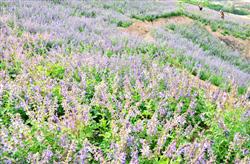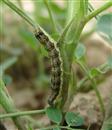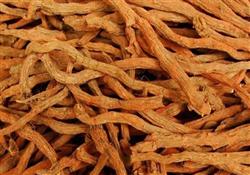What are the cultivation techniques of Salvia miltiorrhiza?

What are Danshen cultivation techniques? Please introduce Salvia miltiorrhiza cultivation can refer to the following methods for planting: breeding germplasm selection Select excellent Danshen varieties or strains (tanshinone content not less than 0.2%, salvianolic acid B content not less than 3.0%) as propagation materials. Seed seedling preparation before sowing Plough the nursery land more than 30cm deep, apply decomposed organic fertilizer 1500kg ~ 2000kg per mu, rake fine, level and make beds with a width of 1.2 m. sowing Sow seeds from the end of March to the end of April, 1.5kg seeds per mu, mixed with 2~3 times of fine sand, broadcast on the seedbed, cover 1cm ~ 1.5cm thick fine soil without seeds. With wheat straw or hay and other crop straw cover strict shade, appropriate watering heat preservation, moisture preservation. seedling management After sowing, keep the seedbed moist, sprout after 12 ~15 days, remove the cover after the seedlings emerge, and carry out intertillage and weeding once. In the first and middle of June, topdressing was applied to seedling, and urea was applied 10kg ~ 15kg per 667m2. Cutting propagation of rhizome When the salvia miltiorrhiza is harvested in autumn every year, thick, red, rotting, fully developed and disease-free annual rooting strips are selected as seed roots, stored in wet sand, dug out at the beginning of March of the next year, cut into roots of about 6 cm to 8cm, and cut on a sand bed in a greenhouse to keep the sand bed moist. Selection and preparation of transplanting land The former crop is gramineous crops, the soil is fertile, the soil layer is deep, the terrain is high, and the sandy loam land with good drainage is selected. The soil preparation is the same as that of the seedbed preparation, and the bed width is 1.2m. planting From the last ten days of April, the plants with strong seedlings and good root growth are selected for transplanting, the plant spacing is 20cm ~ 25cm × 25cm ~ 30cm, the hole depth is 8cm ~ 10cm, the soil is covered and compacted, and proper amount of planting water is poured after planting, and 1000~13000 plants are planted every 667m2. Field Management Intertillage Weeding Weeding was done twice in May and June at the beginning of weed growth period, which should be shallow rather than deep, and weeds were removed from field treatment. After August, due to the vigorous growth of Salvia miltiorrhiza, it is impossible to cultivate, so weeds can only be pulled out in time. The use of herbicides is prohibited. Topdressing 20kg urea per 667m2 in late June. 0.2%~0.3% potassium dihydrogen phosphate or 2% calcium superphosphate leaching solution was used for foliar fertilizer spraying in middle and late July. Drain water in time after rain, prevent root rot. Water in time for drought. In addition to plucking buds for farming, plucking buds in batches should be done sooner rather than later. Be careful not to damage the stems and leaves when picking. Pest control chemical control comply with the interval period of pesticide safety use, pesticide varieties not marked, prohibited 30 days before harvest. root rot Crop rotation and gramineous crop rotation shall be implemented for agricultural control for more than 2 years. Selection of non-planting diseases Fitness cultivation strengthen fertilizer and water management, cultivate strong seedlings. Chemical control: 2 kg of 50% carbendazim WP and 2 kg of 50% thiram WP are mixed with 10kg of fine sand soil to prepare pesticide soil, 3kg ~ 4 kg of 3% phoxim granules are mixed with 3kg ~ 4 kg of phoxim granules, and then they are planted or planted. It can prevent and cure seedling blight, root rot, and various underground pests and nematode diseases. Chemical control in growth period: in disease stage, root was irrigated with 800 times solution of 50% carbendazim or 1000 times solution of 70% thiophanate-methyl, and each infected plant was irrigated with about 250ml solution once every 7 ~10 days for 2~3 consecutive times. 70% thiophanate-methyl 500 times solution or 75% chlorothalonil 600 times solution can also be sprayed once every 10 days for 2-3 times. Emphasize that the solution is sprayed to the base of the stem. Click to get more Danshen planting technology Click to get more herbal planting technology
- Prev

What are the main pests in planting Salvia miltiorrhiza
What are the main pests of planting Salvia miltiorrhiza? Please introduce the main pest control methods of Salvia miltiorrhiza: Spodoptera litura, cotton bollworm, aphids, grubs and so on. First, the control methods of cotton bollworm. 1. Spray 25% insecticidal amidine 500 times solution at budding stage.
- Next

How to cultivate and process Salvia miltiorrhiza?
How to cultivate and process Salvia miltiorrhiza? Please introduce Salvia miltiorrhiza, also known as Radix Salviae Miltiorrhizae, which is the dried root of Radix Salviae Miltiorrhizae. It has the functions of dispelling blood stasis and relieving pain, promoting blood circulation and regulating menstruation, nourishing the heart and removing annoyance. It is suitable for irregular menstruation, amenorrhea, ectopic pregnancy, hepatosplenomegaly, angina pectoris, restless, etc.
Related
- Fuxing push coffee new agricultural production and marketing class: lack of small-scale processing plants
- Jujube rice field leisure farm deep ploughing Yilan for five years to create a space for organic food and play
- Nongyu Farm-A trial of organic papaya for brave women with advanced technology
- Four points for attention in the prevention and control of diseases and insect pests of edible fungi
- How to add nutrient solution to Edible Fungi
- Is there any good way to control edible fungus mites?
- Open Inoculation Technology of Edible Fungi
- Is there any clever way to use fertilizer for edible fungus in winter?
- What agents are used to kill the pathogens of edible fungi in the mushroom shed?
- Rapid drying of Edible Fungi

